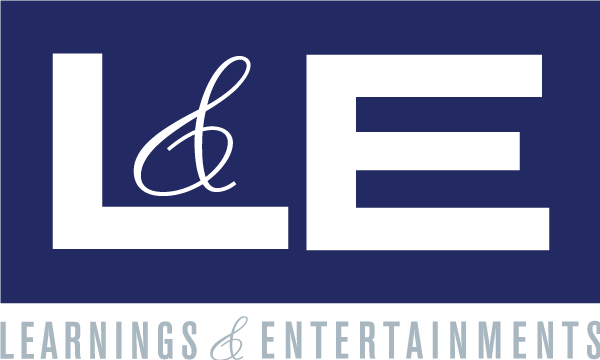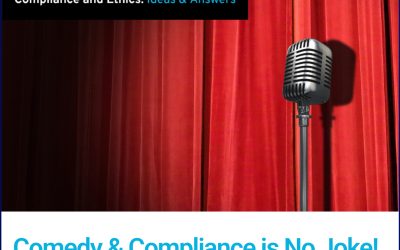Are you familiar with the “Fun Theory?” At it’s foundation, it states that
“fun is the easiest way to change people’s behavior for the better”
Here is an example – the Piano Stairs.
You can see more great examples at http://www.thefuntheory.com/.
The Fun Theory in Business
In the 1970’s, Video Arts introduced the business world to humorous sales and soft skills training videos with John Cleese, of Monty Python fame. The idea was the same…let’s use fun to help socialize learning and change behaviors. It was quite innovative at the time and was quite successful as they shipped video tapes all over the world to help sales people be more effective.
Seven years ago, while working at the famed Second City improv comedy institution, we picked up on this idea and thought, why don’t we adapt and modernize the concept and apply it to the most pressing needs in corporate education. I had the pleasure of leading the development of a product line of fun video communications dedicated to the wonderful world of ethics, compliance and corporate risk…subjects that are quite important and typically reviled when presented to employees “for their own good.” We were first met with a series of comments along the lines of “I love it, but it would never work here.” But over time, as more and more companies came on board and had success, there were fewer and fewer objections. Why? Because the foundational logic is still the same – “fun is the easiest way to change people’s behavior for the better.”
Another recent example of this approach in action is with the inflight safety messages of several major airlines. I will give credit to Southwest Airlines for being the first to allow their flight attendants to use their personalities to convey these important messages in an entertaining way. Now there are several airlines that use entertainments and fun to get people to focus up and pay attention to safety. I’ll give a shout out to Delta Airlines and Air New Zealand whose videos are excellent. Here is an example from Virgin American Airlines
the more important the subject, the more effective entertainment can be in helping people pay attention, engage and remember.
This has been working in advertising for decades. There’s no reason why these same techniques can’t be utilized to engage employees around corporate values, corporate policies & risk, safety, leadership development, customer services, sales training, product training, etc. All can benefit from a positive, proactive, empathetic approach to make these subjects more accessible and digestible. It makes logical sense and there has been proven success – see above.
So why do we still have dry, boring, preachy corporate training and communications that not only makes employees want to put their heads in microwaves, but also has the residual effect of making employees resent the company? Here are some of the excuses we’ve heard along with some rebuttals to help you build a business case for the use of the fun theory in your company.
- Corporate Culture Excuse – “It doesn’t fit our culture.” This is a b.s. excuse. See previous blog post, “Why your Corporate Culture is Your Fault”. We can all actively affect corporate culture by how we choose to communicate. Your leadership is interested in results. There is logic and a track record for successful use of “The Power of Fun” in business. We all need to be responsible for making the case to affect change. It begins with you.
- Perceived versus Actual Risk – Anything new or different is first perceived as risky. While everyone from the front lines through the C-suite embraces fun and entertainment in their personal lives, it is often perceived as risky when applied in the workplace. But it is really? With increased regulation and complexity in the workplace, it seems to be far riskier to continue with the boring, check-the-box approach to training and communications, because then you are assured that your audience learns nothing. They actually resent you for it. If its important, you need to make sure employees pay attention and remember. Humor, music, entertainment and fun can help you win mindshare.
- Misunderstanding – Use of Humor – There is a misunderstanding that humor has to mean “to make fun of.” But this is not the case. In comedy circles we know that things are funny when they are based on truth. In corporate education and communication, we use humor to highlight and exaggerate common behaviors and teachable moments. We use humor to hold a mirror up to the real world so we can see it from a fresh angle. We use humor to pop the tension bubble around difficult subjects and to call out B.S. so that we can then talk about it instead of avoiding the elephant in the room. And we use humor to get to empathy, to put people on an even playing field and to provide a shared experience. Entertainment and purposeful humor can be utilized in service of your message.
- Misunderstanding – Age – The power of fun is not just for millennials. There is growing sentiment that these kinds of fun, social approaches are great for educating and communicating with millennials. This may be true, but I don’t care what age you are. If you are human, you crave fun. Whether you are 22, 42 or 62, you likely go to the movies, listen to music, watch TV, read novels, use Facebook or Linked-in or Twitter, watch videos online, check the news on your smartphone and have probably tried out an emoji or two. Fun and play is for the entire human population. We just need to use these same fun formats and apply them to our corporate environments. It might just help you improve your corporate culture.
- Misunderstanding – Global – “We’re global and humor doesn’t translate.” I’ll grant you that jokes don’t always transfer across culture boundaries because of language, translations, reference levels and rhythms, but that doesn’t mean there aren’t ways to entertain, engage and connect. Music is a great example of a communication device that has great success working across cultural boundaries. Using recognizable conventions such as talk shows, commercials and movie trailers are also fun formats that can help convey important information in way that will stand out. No matter where you are in the world, people appreciate fun more than boring. Even if some of your efforts are lost in translations, your audience will appreciate the effort.
- Time & Effort – Communicating with empathy and humor takes effort. Most companies spend their time coming up with “The What” and not enough time on the “The How.” It takes time to take your messaging/training and find creative ways to convey that information in a way that your audience will best receive it, as opposed to how you “need” to say it. This doesn’t have to be complicated. It just takes initiative and thought. We all have the capacity for creativity – see previous blog post – Your Company Needs You To Unlock Your Inner Artist. And if you’re too busy, there are professionals who can help. Shameless plug – www.learningsentertainments.com
- Fear – Specifically, fear of offense. Companies work quite hard to ensure that ever single word/ sentence/picture in their corporate messaging will be palatable for the masses. By the time a simple idea has been run through HR and legal and a few rounds of leadership review, it’s as flavorful as broth. There ends up being a zero percent chance of engaging your audience. This is not advocating insensitivity, nor is it an excuse for sloppy, inconsiderate writing. The point is that when you to try to appeal to everyone, you engage no one. Corporate educators and leaders need to try new things, lots of different things, to try and get a pulse out of the audience. Each initiative shouldn’t be viewed in isolation. You need to try different things to to try and reach different people. And guess what? Many of these things will not work because different people like different things. In the melting pot of most corporate enterprises, it’s an absolute certainty that any new initiative will illicit some criticism. This is okay. Don’t be paralyzed by seeking out the perfect. Try new formats, devices and styles. Mix it up. Learn from your experiences and use negative responses as teaching opportunities. You can’t dumb things down or you end up dissatisfying everybody. In the improv world there is a saying from the great Del Close, “treat your audience like artists, poets and geniuses and they’ll have the chance to become them.”
————–
As corporate educators and leaders, we all have the power to influence our corporate culture by how we choose to communicate. Be proactive. Look for opportunities to inject some positivity and a sense of play. Smile, play games and have fun. Try new things. Remember the Fun Theory. It’s the easiest way to change people’s behavior for the better. And if you’d like some help and support, give us a call!
To read more posts, visit Thoughts While Shaving
L&E Creative Communications – Comedy, Communication, Corporate Education




